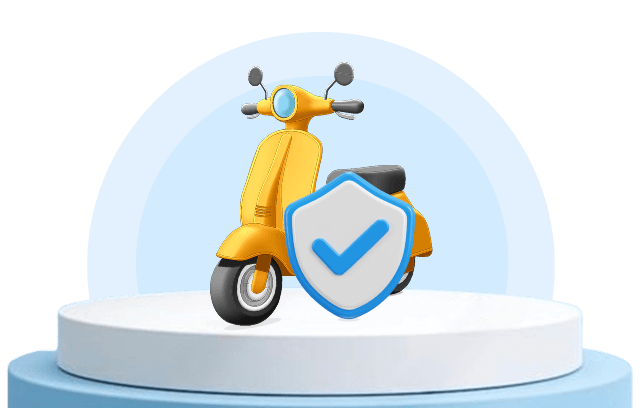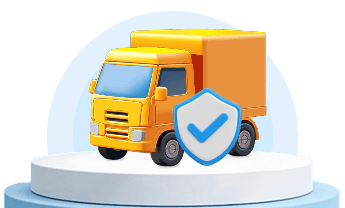
Be it the busy Manila road or any other highly congested city road, accidents can happen to anyone, anywhere, anytime. What can, however, ease the recovery process is having a car insurance policy that not only offers financial but also emotional aid during your worst days.
In the Philippines, every car owner is legally bound to get insurance; however, the process of filing a claim scares a considerable percentage. Filipinos are often confused about the process, required documents, coverage, and timeline.
Therefore, to end the confusion once and for all, we have curated this article that talks about -
- How to file a car insurance claim
- Key coverage you require
- Mistakes to avoid and more
So, whether you are a new car owner or someone who has just been involved in an accident, this guide will help you with the claim-filing process.
Car Insurance in the Philippines - An overview
As mentioned, car insurance in the Philippines is a legal requirement that can’t be skipped. It also safeguards you financially against several liabilities and risks.
By law, every car owner needs CTPL insurance; however, it alone doesn’t provide optimum protection, and so comprehensive insurance is recommended. Let us understand the two a little better -
|
CTPL Insurance |
Comprehensive Insurance |
|
|
Also Read: CTPL vs. Comprehensive Car Insurance: What’s the Difference?
How does car insurance offer protection to the insured after an accident?
If a car owner gets an optimum car insurance policy, then in case of an accident/they will benefit from the following -
- No need to pay for car repair, an insurance policy will take care of everything.
- Third parties involved in the accident, such as pedestrians and other drivers, will receive medical support from the insurance provider.
- Insurance providers will take care of lawsuits or claims filed against the policyholder.
- Natural calamities like floods, earthquakes, etc., are common in the country, exposing your car to significant damage. With the right insurance coverage, you are financially protected against such damages.
How to file a car insurance claim? A step-by-step guide
Filing a car insurance claim doesn’t need to be stressful; all you need is to follow the process promptly and in the right order.
Step 1: Ensure everyone's safety
After the accident, look out for injuries and the safety of all the involved parties, including yourself. Call for medical assistance, if required and move to a safe spot.
Step 2: Report the accident
After ensuring everyone’s safety, it’s time to call the authorities and obtain an official accident report.
Step 3: Time to call the insurance provider
Try your best to inform your insurer about the incident within the first 24 hours of the accident. This can be done by calling the provider’s 24/7 hotline number or the agent. On the call, provide details about the accident and enquire about the claim form & required documents.
Step 4: Gather required documents
Make sure to collect all the essential documents, including a copy of the driver’s license, OR/CR, police report, insurance policy, and photos of the vehicle damage & accident scene.
Also Read: Car accident in the Philippines? Here’s the photo evidence you need for filing a claim
Step 5: Wait for inspection & claim evaluation
Next, your insurer will send an adjuster, who will then inspect the vehicle and accident scene.
Step 6: Claim settlement & repair process
If everything goes well, your claim will get approved, and the insurer will pay for the repair and cover other costs.
 Photo from Freepik
Photo from FreepikKey insurance coverage required after an accident
Compulsory Third-Party Liability (CTPL) coverage
It is a must for LTO vehicle registration. It covers third-party injury or death, but not third-party property damage or the policyholder’s injury.
Comprehensive coverage
It offers wider protection to the insured in case of an unexpected & unfortunate event involving the insured motor vehicle. Usually it provides following coverage - Acts of God (earthquakes and typhoons), Car Theft, Riot, Strikes & Vandalism, Fire & Explosion, Legal liabilities for third parties (in case of death & bodily injuries), Third-party liability or damage to other’s property (like car, building, etc), Damage to insured motor vehicle.
Medical coverage (for driver & passengers)
Some car insurance policies offer medical reimbursement for medical treatment for drivers and passengers, regardless of the fault.
Towing reimbursement
Insurance policies with roadside assistance or towing coverage offer towing reimbursement to the insured from the provider.
Mistakes to avoid when filing a claim
Even with the best of coverage, sometimes claims get denied/delayed due to mistakes that are often avoidable. Let us check out some of the common pitfalls -
- Delayed reporting of the accident to the insurance provider; do not wait for days before reporting the incident, as this may create suspicion in the mind of the insurer and lead to claim denial.
- Incomplete documentation; failing to submit complete documentation slows down the claim process. Make sure to prepare all necessary paperwork beforehand.
- Misrepresentation of accident details; providing false information or hiding key details from the insurer may void your policy.
- Always be honest and provide accurate information to avoid complications.
Tips to speed up the claim process
- Try to go to an accredited repair shop to avoid delays.
- Keep additional copies of all the required documents, such as OR/CR, driver’s license, insurance policy, etc.
- Cooperate with the adjuster fully and provide all the required information.
- Take as many pictures of the accident scene and involved vehicles as possible (that too from different angles).
- Call the insurance provider as soon as possible after the accident (call the provider’s hotline number).
Rights & responsibilities of policyholders
|
Rights of a policyholder |
Responsibilities of a policyholder |
|
|
Also Read: Top car insurance worries Filipino drivers face - and how to fix them
Bottom line
In the Philippines, car insurance is more than just a means of financial coverage; rather, it is a legal requirement without which your car is of no use. To drive your vehicle legally, you need LTO registration, which comes through after the owner acquires CTPL insurance. However, car insurance here is a lot more than CTPL; there’s comprehensive and add-ons coverage that offer a safety net when unexpected things happen.
However, in addition to getting the required coverage, it is essential that you know the right way to file a claim and mistakes to avoid - to save money, time, and stress. So, be it a minor fender-bender or a major accident, having the right coverage will ensure both legal and financial protection.
So, always be prepared, guys, this will bring you peace of mind every time you hit the road.
FAQs
Q1. I only have a CTPL insurance policy for my car. Is it good enough?
Ans. It is good enough from the point of view of meeting the minimum requirement for car insurance in the country and getting the vehicle registered at the LTO. In terms of protection, it is NOT, as it only covers third-party bodily injuries.
Q2. Is there a participation fee that needs to be paid for car insurance?
Ans. Yes. It comes in the form of a deductible, which is the amount paid by the insured from their pocket (for repair) before the insurance settlement amount kicks in and covers the rest.
Q3. How long after an accident should I file an insurance claim?
Ans. It is recommended to notify the insurer as soon as possible after an accident; usually, filing a claim within the first 24 hours is considered good practice.
Q4. Do I need a police report for filing an insurance claim?
Ans. Having a police report gives the policyholder an edge and increases the chances of claim approval.
Q5. What documents are required while filing a claim?
Ans. The policyholder needs to submit the following documents along with the duly accomplished claim document: driver’s license, insurance policy, OR/CR, photos of the damage, and a police report.
Q6. Will my insurance policy cover car damage due to the flood?
Ans. Only if your car insurance policy covers ‘Acts of God’ coverage. This one offers protection against damage due to natural calamities like floods, earthquakes, typhoons, landslides, volcanic eruptions, etc.
Q7. Can I go to a repair shop of my choice after an accident?
Ans. Yes, you can choose your own repair shop after an accident; however, if your insurance provider accredits it, the claim process is faster and hassle-free.
Q8. What are the drawbacks of going for a non-accredited repair shop?
Ans. It includes making out-of-pocket payments, no guarantee of the work done by the insurer, and the need to prove the fairness of the repair cost to the insurer.
Q9. Do insurance providers inspect the vehicle after an accident?
Ans. Yes, the insured vehicle is inspected and evaluated thoroughly by an adjuster representing the insurance company. Their job involves checking the car and assessing the estimated repair cost.
Q10. What if a policyholder lies about an accident detail?
Ans. Lying about the accident or any related information is strictly prohibited and can lead to denial of the claim.
Q11. What about the passengers' medical expenses? Are they covered?
Ans. Only if your policy includes coverage options like Passenger Accident or Medical Reimbursement.
Q12. I was not driving at the time of the accident. Can I still claim insurance?
Ans. You can if the driver is an authorised driver under your car insurance policy.
Q13. Will my insurance premium rise after filing a claim?
Ans. It is possible; some insurance providers increase the premiums of policyholders who file multiple claims in a short span of time.
Q14. The car accident was my fault. Can I still file for a claim?
Ans. Yes, you can. Comprehensive insurance covers accidents regardless of who is at fault.
Q15. Is there a way to avoid claim rejection?
Ans. Try the following: report as soon as possible, submit complete documentation, do not lie, and make sure your insurance policy is updated.
Also Read: Car insurance endorsements simplified: A guide to smarter coverage











